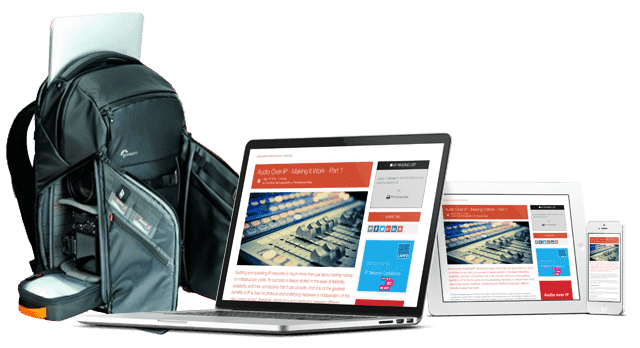Grande Halle de la Villette Deploys Riedel Intercom And Signal Distribution Solutions

The Grande Halle de la Villette (EPPGHV) in Paris has deployed Riedel’s state-of-the-art intercom and signal distribution solutions to enhance its technological capabilities for diverse events ranging from festivals and parties to exhibitions, conferences, and live shows.
Powered by Riedel’s Artist-1024 intercom system and MediorNet real-time media network, this setup seamlessly integrates intercom and signal distribution across EPPGHV’s six distinct scenographies, resulting in improved operational efficiency and an elevated experience for both event organizers and attendees.
The relationship between Riedel and EPPGHV began in 2019 with the rental of Bolero Standalone kits. Impressed by the system's performance, EPPGHV initiated a larger structural project in 2022 for a complete overhaul of its communications infrastructure. This new workflow represents a significant improvement over the previous setup, which lacked a comprehensive video distribution solution and did not have sufficient intercom devices – often requiring equipment rentals. The new system not only eliminates these rental costs, it also provides a more cohesive and efficient workflow, allowing the venue to handle complex intercom and signal distribution requirements with greater ease and flexibility. Additionally, this new setup includes a nodal rack, and several mobile racks interconnected through the venue's optical fiber and IP network, providing unprecedented flexibility in system deployment.
At the heart of the new setup is Riedel’s Artist-1024 intercom system, complemented with the company’s 1200/2300 Series SmartPanels, Bolero wireless intercom, MicroN UHD and MicroN media distribution devices, and RiFace radio interfaces. The MNCA application plays a pivotal role in the workflow by linking the video router distribution with the intercom system, allowing operators to recall configuration snapshots and control MediorNet directly from RSP-2318 SmartPanels located in various points throughout the venue. This capability significantly streamlines operations, allowing for quick and intuitive management of video signals from various control points. The system's agility is further enhanced by the use of mobile racks, which can be built and deployed as needed to connect the main infrastructure through the venue's optical fiber and IP network. This modular approach allows EPPGHV to easily scale its intercom and signal distribution capabilities up or down depending on the requirements of each event.
To optimize setup times for different events, the team at EPPGHV makes extensive use of partial files and snapshots. These pre-configured settings can be quickly recalled, dramatically reducing the time needed to prepare for different types of events. The workflow also incorporates logic functions, automations, and the ability to recall partial configuration files, further optimizing installation time and allowing the team to swiftly meet the technical needs of different shows and events. Moreover, by using multiple instances of Director and Mediorworks software, EPPGHV can attribute user rights based on various roles. This granular control ensures that staff members have access to the specific functions they need, enhancing both security and operational efficiency.
This advanced workflow was put to the test during the Summer Games in Paris, where EPPGHV hosted the "French club" and successfully provided broadcast signals and standards to other service providers on-site. This event demonstrated the Riedel system's ability to meet professional broadcast requirements, even in a nontraditional broadcast environment.
You might also like...
Building Software Defined Infrastructure: Asynchronous & Synchronous Media Processing
One of the key challenges of building software defined infrastructure is moving to a fundamentally synchronous media like video to an asynchronous architecture.
Monitoring & Compliance In Broadcast: Monitoring Cloud Infrastructure
If we take cloud infrastructures to their extreme, that is, their physical locality is unknown to us, then monitoring them becomes a whole new ball game, especially as dispersed teams use them for production.
Phil Rhodes Image Capture NAB 2025 Show Floor Report
Our resident image capture expert Phil Rhodes offers up his own personal impressions of the technology he encountered walking the halls at the 2025 NAB Show.
Building Hybrid IP Systems
It is easy to assume that the industry is inevitably and rapidly making the move to all-IP infrastructures to leverage IP’s flexibility and scalability, but the reality is often a bit more complex.
Microphones: Part 9 - The Science Of Stereo Capture & Reproduction
Here we look at the science of using a matched pair of microphones positioned as a coincident pair to capture stereo sound images.








